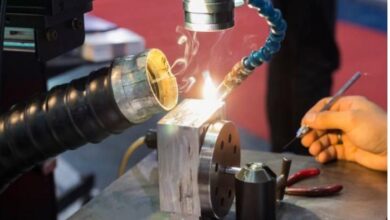Navigating the Future: Universal Joints in an Era of Emerging Technologies

Universal joints, often hailed as the workhorses of mechanical systems, have been around for centuries, quietly enabling motion in a wide array of applications. From automotive engineering to industrial machinery, their versatility and reliability have made them indispensable. However, as technology advances at a rapid pace, the landscape of universal joints is undergoing significant transformation. In this blog, we’ll delve into the emerging trends and technologies that are shaping the future of universal joints.
Evolution of Universal Joints:
Universal joints, also known as cardan joints or U-joints, have a rich history dating back to ancient civilizations. Initially crafted from simple materials like wood and leather, they have evolved into precision-engineered components made from high-strength metals and alloys. This evolution has been driven by the increasing demands for efficiency, durability, and performance in modern mechanical systems.
Lightweight Materials and Advanced Alloys:
One of the key trends shaping the future of universal joints is the adoption of lightweight materials and advanced alloys. As industries strive to improve fuel efficiency and reduce emissions, there is a growing emphasis on lightweight design in automotive, aerospace, and marine applications. Titanium, carbon fiber, and high-strength aluminum alloys are increasingly being used to construct universal joints that offer the perfect balance of strength and weight savings.
Integration with Smart Technologies:
The rise of smart technologies is revolutionizing the way universal joints are designed and integrated into mechanical systems. Sensors and actuators embedded within universal joints enable real-time monitoring of performance metrics such as temperature, vibration, and torque. This data can be used to optimize maintenance schedules, predict potential failures, and enhance overall system reliability.
Customization and 3D Printing:
Another emerging trend in the universal joint industry is the use of 3D printing technology for customization and rapid prototyping. Traditional manufacturing methods often involve complex tooling and long lead times, making it challenging to produce custom-designed universal joints for specific applications. With advancements in 3D printing, engineers can now create intricate geometries and prototypes with unparalleled speed and precision, allowing for rapid iteration and customization.
Integration with SS Hinges:
Stainless steel (SS) hinges are becoming increasingly popular in various industries due to their corrosion resistance, durability, and aesthetic appeal. The integration of SS hinges with universal joints offers several advantages, including enhanced longevity in harsh environments, improved aesthetics in architectural applications, and reduced maintenance requirements in marine and outdoor settings. This trend underscores the importance of synergy between different mechanical components to achieve optimal performance and reliability.
Virtual Reality and Simulation:
Virtual reality (VR) and simulation technologies are transforming the way universal joints are designed, tested, and optimized. Engineers can now create virtual prototypes of complex mechanical systems, allowing them to visualize motion dynamics, identify potential issues, and fine-tune designs before physical prototyping. This iterative approach not only accelerates the product development cycle but also minimizes costs and reduces the risk of unexpected failures in real-world applications.
Sustainable Manufacturing Practices:
With growing awareness of environmental sustainability, there is a growing emphasis on adopting eco-friendly manufacturing practices in the universal joint industry. Companies are investing in renewable energy sources, recycling programs, and sustainable materials to minimize their carbon footprint and reduce environmental impact. From using recycled metals in manufacturing to implementing energy-efficient production processes, the shift towards sustainability is reshaping the future of universal joint manufacturing.
Conclusion:
As we journey into the future, universal joints will continue to play a pivotal role in enabling motion and flexibility in mechanical systems across various industries. The emerging trends and technologies outlined in this blog underscore the dynamic nature of the universal joint industry and the constant quest for innovation and optimization. From lightweight materials and smart technologies to customization and sustainable practices, the future of universal joints is indeed bright and promising. As engineers and manufacturers embrace these trends, we can look forward to a new era of efficiency, reliability, and performance in universal joint technology.




